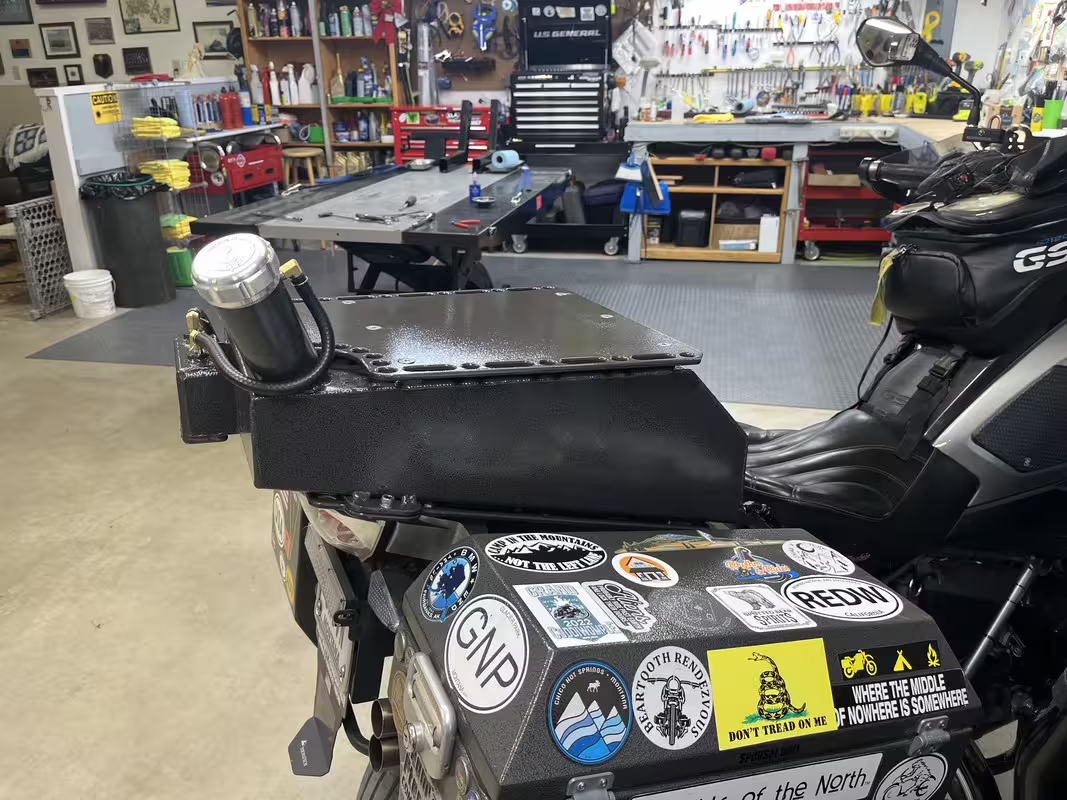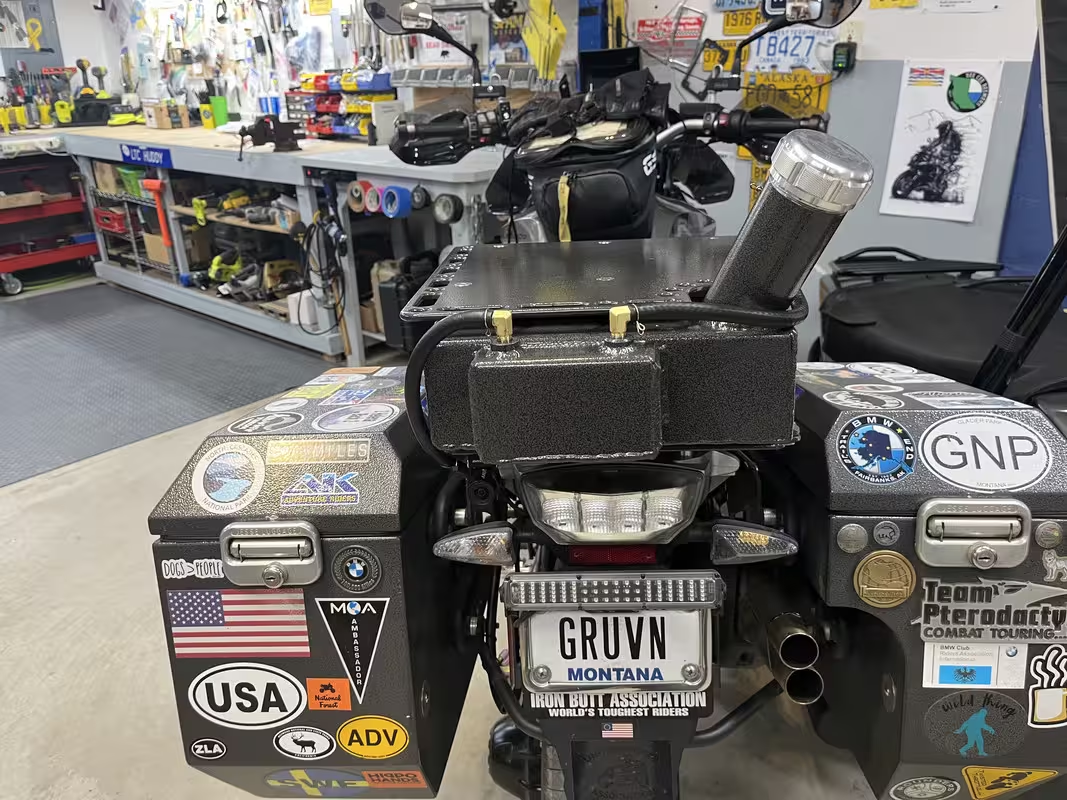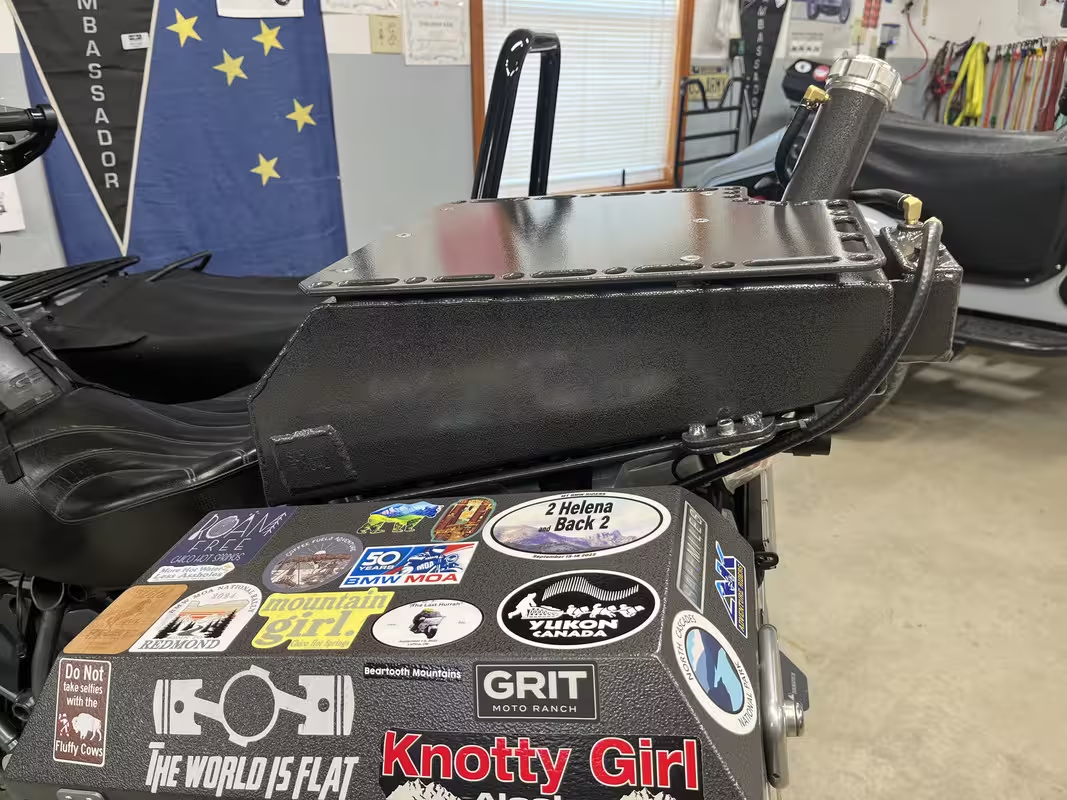akbeemer
SURVIVOR
Annie had an auxiliary fuel tank built for LBS sidecar rig. With the sidecar added, she can count on 30 MPG as a planning range. She can do better, but we always assume 150 Miles as her safe range on her 5 gallon OE tank. She has double that now (the aux tank is 5 gallons) and my GSA rig can be counted on to have a 240 mile range. Good numbers for our planned return to the Yukon and AK next spring.
We rode up to Kalispell last Saturday to have it installed. We saw 19 degrees near Lincoln. I took it off when we got home and had it powder coated. On the GS/A there is no need to put a hole in the OE fuel tank. The line from the aux tank attaches to where the breather hose on the tank and the fuel is constantly transferred by the vacuum created in the tank.



We rode up to Kalispell last Saturday to have it installed. We saw 19 degrees near Lincoln. I took it off when we got home and had it powder coated. On the GS/A there is no need to put a hole in the OE fuel tank. The line from the aux tank attaches to where the breather hose on the tank and the fuel is constantly transferred by the vacuum created in the tank.










